Straight Lady: The Story of Margaret Dumont,
the Marx Brothers, and the Making of A Day at the Races
by Howard Kazanjian and Chris Enss will be released fall 2022.
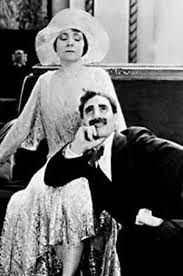
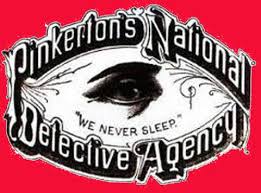
Jack Zahran, president of the Pinkerton National Detective Agency, wrote the foreword for The Pinks.
I’m honored he contributed to the book.
When Allan Pinkerton founded the Pinkerton Detective Agency in 1850, he not only became the world’s first “private eye,” he also established an organization that would set the global standard for investigative and security excellence for generations to come.
But the agency had only just begun the process of setting that standard when Kate Warne walked into Allan Pinkerton’s office six years later and asked for a job. Her request was well timed. Pinkerton was keenly focused on new opportunities and was consciously looking to make bold choices that reinforced his vision of Pinkerton as an innovator and a disruptor.
Warne’s confidence and persuasive skills were impressive, and Pinkerton’s flexibility and willingness to “defy convention” perhaps equally so. It is to his credit, and to the enduring credit of the Pinkerton Detective Agency, that it took Pinkerton less than twenty-four hours to inform Warne that he would hire her—a decision that made her the nation’s first female detective. It was a remarkable turn of events at a time when only 15 percent of women held jobs outside of the home, and contemporary ideas about what constituted “women’s work” severely limited employment opportunities for women.
Kate Warne, and the accomplished women who played such an important role in building the Pinkerton Detective Agency into an iconic global security and law enforcement institution, made it abundantly clear that the prevailing definition of “women’s work” was not just inadequate, but wholly obsolete.
Kate’s story, and the stories of all these remarkable female operatives—presented so beautifully and in such rich detail here in this fascinating and important book—are not just a moving reminder of the achievements of a handful of bold pioneers, they are also a remarkable testament to the exemplary tradition of innovation that has distinguished the Pinkerton name over the course of more than a century and a half of dedicated service.
Allan Pinkerton was very clear about the fact that he wanted his company to be fearless and to have a “reputation for using innovative methods to achieve its goals.” What is remarkable is not just the aspiration, but the execution: This founding vision would grow into a long-standing tradition of innovation and a commitment to inspired service that became intricately woven into Pinkerton’s organizational DNA.
Pinkerton’s enduring legacy of bold moves, brave choices, and the relentless pursuit of excellence is much more than just an aging résumé—it is the foundation for an organization that remains on the cutting edge. Today, the company that predates the Civil War not only remains relevant but has continued to establish itself as a dynamic and innovative presence on the world stage. Pinkerton is a recognized industry leader in developing forward-looking security and risk management solutions for national and international corporations. Remarkably, an organization that once protected Midwestern railways and pursued famous outlaws like Jesse James and Butch Cassidy is now providing sophisticated corporate risk management strategies and high-level security services for clients across the globe, setting a twenty-first-century standard for corporate risk management.
Now, as then, Pinkerton understands that combating new and emerging threats and serving its clients requires a willingness to challenge conventional wisdom and embrace new assets and new ideas—whether they are the world’s first female detectives or new cybersecurity protocols. From investigative and private detective work to security and corporate risk consulting, Pinkerton prides itself on doing whatever it takes to keep its clients safe and to protect their assets and their interests. That resolve is one of the biggest reasons why an agency that was protecting Abraham Lincoln was also on the ground in the aftermath of Hurricane Katrina, and why the principles and practices that were in place almost eighty years before the discovery of penicillin still apply to an organization that provides risk management services to some of the world’s most innovative enterprises in 2016.
As you read and enjoy these fascinating profiles of gifted Pinkerton operatives, you will readily see how their work and their character exemplified the agency’s values of Integrity, Vigilance, and Excellence. Ultimately, those attributes are at the heart of these tales, and at the heart of the larger Pinkerton story. It’s a history that spans three centuries, with compelling new chapters still being written each and every day.
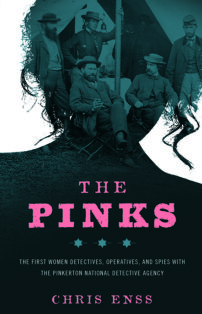

From the Women’s Studies Shelf
The Pinks
Chris Enss
TwoDot
c/o Rowman & Littlefield
9781493008339 $16.95 www.rowman.com
The Pinks: The First Women Detectives, Operatives, and Spies with the Pinkerton National Detective Agency is recommended for history, women’s issues, and sociology holdings with a special interest in law enforcement as it surveys the Pinkerton Detective Agency and the true stories surrounding the first woman detective in America and those who came after her. Chapters capture feats of courage, daring, and historical import as they follow female agents who pursue justice and whose exploits added to American history and early struggles for justice. No women’s history collection should be without this lively, important survey.
This from the Midwest Book Review
The Midwest Book Review
Established in 1976, the Midwest Book Review is an organization committed to promoting literacy, library usage, and small press publishing. The MBR publishes the following monthly book review magazines specifically designed for community and academic librarians, booksellers, and the general reading public.
The Tombstone Epitaph is a Tombstone, Arizona, based monthly publication that serves as a window in the history and culture of the Old West. Founded in January 1880 (with its first issue published on Saturday May 1, 1880), The Epitaph is the oldest continually published newspaper in Arizona.
It long has been noted for its coverage of the infamous Gunfight at the O.K. Corral on Oct. 26, 1881, and its continuing research interest in Wyatt Earp, Doc Holliday and their cowboy adversaries. In 2005, for example, it presented for the first time a sketch of the O. K. Corral gunfight hand drawn by Wyatt Earp shortly before his death.
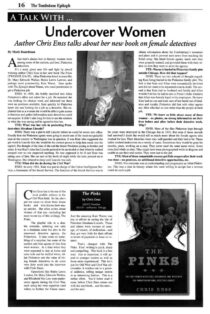

“This new history title belongs in any collection strong in lively, accessible surveys of women’s roles in American social, political, and economic development.
Chris Enss’s Iron Women: The Ladies Who Helped Build the Railroad (9781493037759, $19.95 PB, $14.49) follows the contributions women made to the expansion of the railroad across country even as an authoritative report claimed that “no woman had laid a rail and no woman had made a survey.” So, what did they do? Plenty. Women have been connected with railroading efforts from 1838 to modern times, and this book considers their roles, their influence in how the rail lines were created, and their largely unheralded position that should be as central to American rail history as any man’s. These biographical sketches of women who made a different blend into overall rail history to provide an illustrated and specific review of women who were architects, designers, hospitality ambassadors, engineers, and more.”

Jack Zahran, president of the Pinkerton National Detective Agency, wrote the foreword for The Pinks.
I’m honored he contributed to the book.
When Allan Pinkerton founded the Pinkerton Detective Agency in 1850, he not only became the world’s first “private eye,” he also established an organization that would set the global standard for investigative and security excellence for generations to come.
But the agency had only just begun the process of setting that standard when Kate Warne walked into Allan Pinkerton’s office six years later and asked for a job. Her request was well timed. Pinkerton was keenly focused on new opportunities and was consciously looking to make bold choices that reinforced his vision of Pinkerton as an innovator and a disruptor.
Warne’s confidence and persuasive skills were impressive, and Pinkerton’s flexibility and willingness to “defy convention” perhaps equally so. It is to his credit, and to the enduring credit of the Pinkerton Detective Agency, that it took Pinkerton less than twenty-four hours to inform Warne that he would hire her—a decision that made her the nation’s first female detective. It was a remarkable turn of events at a time when only 15 percent of women held jobs outside of the home, and contemporary ideas about what constituted “women’s work” severely limited employment opportunities for women.
Kate Warne, and the accomplished women who played such an important role in building the Pinkerton Detective Agency into an iconic global security and law enforcement institution, made it abundantly clear that the prevailing definition of “women’s work” was not just inadequate, but wholly obsolete.
Kate’s story, and the stories of all of these remarkable female operatives—presented so beautifully and in such rich detail here in this fascinating and important book—are not just a moving reminder of the achievements of a handful of bold pioneers, they are also a remarkable testament to the exemplary tradition of innovation that has distinguished the Pinkerton name over the course of more than a century and a half of dedicated service.
Allan Pinkerton was very clear about the fact that he wanted his company to be fearless and to have a “reputation for using innovative methods to achieve its goals.” What is remarkable is not just the aspiration, but the execution: This founding vision would grow into a long-standing tradition of innovation and a commitment to inspired service that became intricately woven into Pinkerton’s organizational DNA.
Pinkerton’s enduring legacy of bold moves, brave choices, and the relentless pursuit of excellence is much more than just an aging résumé—it is the foundation for an organization that remains on the cutting edge. Today, the company that predates the Civil War not only remains relevant but has continued to establish itself as a dynamic and innovative presence on the world stage. Pinkerton is a recognized industry leader in developing forward-looking security and risk management solutions for national and international corporations. Remarkably, an organization that once protected Midwestern railways and pursued famous outlaws like Jesse James and Butch Cassidy is now providing sophisticated corporate risk management strategies and high-level security services for clients across the globe, setting a twenty-first-century standard for corporate risk management.
Now, as then, Pinkerton understands that combating new and emerging threats and serving its clients requires a willingness to challenge conventional wisdom and embrace new assets and new ideas—whether they are the world’s first female detectives or new cybersecurity protocols. From investigative and private detective work to security and corporate risk consulting, Pinkerton prides itself on doing whatever it takes to keep its clients safe and to protect their assets and their interests. That resolve is one of the biggest reasons why an agency that was protecting Abraham Lincoln was also on the ground in the aftermath of Hurricane Katrina, and why the principles and practices that were in place almost eighty years before the discovery of penicillin still apply to an organization that provides risk management services to some of the world’s most innovative enterprises in 2016.
As you read and enjoy these fascinating profiles of gifted Pinkerton operatives, you will readily see how their work and their character exemplified the agency’s values of Integrity, Vigilance, and Excellence. Ultimately, those attributes are at the heart of these tales, and at the heart of the larger Pinkerton story. It’s a history that spans three centuries, with compelling new chapters still being written each and every day.


The Pinks is the true story of Kate Warne and the other women who served as Pinkertons, fulfilling the adage, “Well-behaved Women Seldom Make History.”
Most students of the Old West and American law enforcement history know the story of the notorious and ruthless Pinkerton Detective Agency and the legends behind their role in establishing the Secret Service and tangling with Old West Outlaws. But the true story of Kate Warne, an operative of the Pinkerton Agency and the first woman detective in America—and the stories of the other women who served their country as part of the storied crew of crime fighters—are not well known. For the first time, the stories of these intrepid women are collected here and richly illustrated throughout with numerous historical photographs. From Kate Warne’s probable affair with Allan Pinkerton, and her part in saving the life of Abraham Lincoln in 1861 to the lives and careers of the other women who broke out of the Cult of True Womanhood in pursuit of justice, these true stories add another dimension to our understanding of American history.
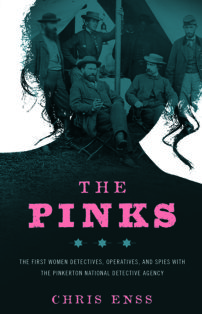
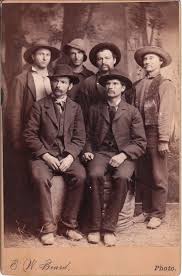
A pair of tired, dust-covered detectives escorted outlaw Tom Bell to a noose dangling off a limb of a sycamore tree. No one spoke a word as the rope was slipped around his thick neck. More than fifteen lawmen from Sacramento, Marysville, and Nevada City, California, made up the posse that apprehended Bell at his hideout at Firebaugh’s Ferry near the San Joaquin River. The ruthless highwayman and his gang had eluded the law for more than a year. Bell’s reign of terror would end here – a mere four hours after he was captured on Saturday, October 4, 1856.
Bell held in his hand a pair of letters his executioners allowed him to write before they administered justice. Outside of the firm grip he had on his correspondence he didn’t show the least bit of fear. Judge Joseph Belt, the self-appointed hangman and head of the posse, sauntered over to Bell and looked him in the eye. “Do you have anything to say for yourself?” he asked.
“I have no revelations to make,” Bell replied. “I would be grateful, however,” he added, “to drink to the health of this party present and hope that no personal prejudice has induced them to execute me.” Judge Belt nodded to one of his men who stepped forward with a bottle of whiskey and offered it to Bell.
Bell lifted the bottle to the men and thanked them for their thoughtfulness. “I have no bitterness toward anyone of you,” he said. He took a drink and handed the bottle back to the lawman. “If you let me now…before I go. I’d like to read aloud the letter I wrote to my mother.” Judge Belt scanned the faces of his men; no one seemed to have any objections. “Go on,” Belt told the bandit. Tom unfolded one of the letters in his hand and began reading.
“Dear Mother, I am about to make my exit to another country. I take this opportunity to write you a few lines. Probably you may never hear from me again. If not, I hope we may meet where parting is no prodigal career in the country. I have always recollected your fond admonitions, and if I had lived up to them I would not have been in my present position; but dear mother, though my fate has been a cruel one, yet I have no one to blame but myself.
“Give my respects to all old and youthful friends. Tell them to beware of bad associations, and never to enter into any gambling saloons, for that has been my ruin. If my old grandmother is living, remember me to her. With these remarks, I bid you farewell forever. Your only boy, Tom.”
Bell refolded his letter and bowed his head in prayer. Two lawmen stepped forward, took the letters from him, and tied his hands behind his back. Tom lifted his head and nodded to Judge Belt. His horse was whipped from under him, and he swung into space. Judge Belt’s posse was one of three notable posses assembled between March 1856 and October 1856 to track down Tom Bell and his gang of highwaymen terrorizing settlers in the Gold Country.
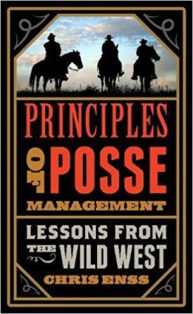

Dora Hand was in a deep sleep. Her bare legs were draped across the thick blankets covering her delicate form, and a mass of long, auburn hair stretched over the pillow under her head and dangled off the top of a flimsy mattress. Her breathing was slow and effortless. A framed, graphite-charcoal portrait of an elderly couple hung above the bed on faded, satin-ribbon wallpaper and kept company with her slumber.
The air outside the window was still and cold. The distant sound of voices, backslapping laughter, profanity, and a piano’s tinny, repetitious melody wafted down Dodge City’s main thoroughfare and snuck into the small room where Dora was sleeping.
Dodge was an all-night town. Walkers and loungers kept the streets and saloons busy. Residents learned to sleep through the giggling, growling, and gunplay of the cowboy consumers and their paramours for hire. Dora was accustomed to the nightly frivolity and clatter. Her dreams were seldom disturbed by the commotion.
All at once the hard thud of a pair of bullets charging through the door and wall of the tiny room cut through the routine noises of the cattle town with uneven, gusty violence. The first bullet was halted by the dense plaster partition leading into the bed chambers. The second struck Dora on the right side under her arm. There was no time for her to object to the injury, no moment for her to cry out or recoil in pain. The slug killed her instantly.
In the near distance, a horse squealed, and its galloping hooves echoed off the dusty street and faded away.
A pool of blood poured out of Dora’s fatal wound, turning the white sheets she rested on to crimson. A clock sitting on a nightstand next to the lifeless body ticked on steadily and mercilessly. It was 4:15 in the morning on October 4, 1878, and for the moment nothing but the persistent moonlight filtering into the scene through a closed window marked the thirty-four-year-old woman’s passing.
Twenty-four hours prior to Dora’s being gunned down in her sleep, she had been on stage at the Alhambra Saloon and Gambling House. She was a stunning woman whose wholesome voice and exquisite features had charmed audiences from Abilene to Austin. She regaled love-starved wranglers and rough riders at stage and railroad stops with her heartfelt rendition of the popular ballads “Blessed Be the Ties That Bind” and “Because I Love You So.”
Adoring fans referred to her as the “nightingale of the frontier,” and admirers continually competed for her attention. More times than not, pistols were used to settle arguments about who would be escorting Dora back to her place at the end of the evening. Local newspapers claimed her talent and beauty “caused more gunfights than any other woman in all the West.”
Dora arrived in Dodge City in June of 1878. Several of the city’s residents who knew the songstress was on her way were eagerly anticipating her arrival. Among them was the mayor of Dodge City, James Kelley. Mayor Kelley had made Dora’s acquaintance at Camp Supply. He was smitten with her, and the pair became romantically involved shortly after she stepped off the stage in Dodge.
James “Spike” Kenedy, the handsome, overly indulged son of Texas cattle baron Mifflin Kenedy, was annoyed that Dora was spending time with the mayor. He hoped to make her his own. James was a tall man with a strong build, and he was accustomed to getting his own way. He wore tailor-made clothes and carried himself with confidence derived mostly from his family’s sizeable bank account and land holdings. In September 1878, James strutted into the Alhambra Saloon and Gambling House with the intention of proposing to Dora. He hoped they’d marry quickly, and then he would escort her back to the family ranch. It didn’t enter his mind that Dora would reject his offer of marriage in favor of a relationship with the mayor. He was furious when she told him, and his hatred of Mayor Kelley and Dora grew from that day forward.
